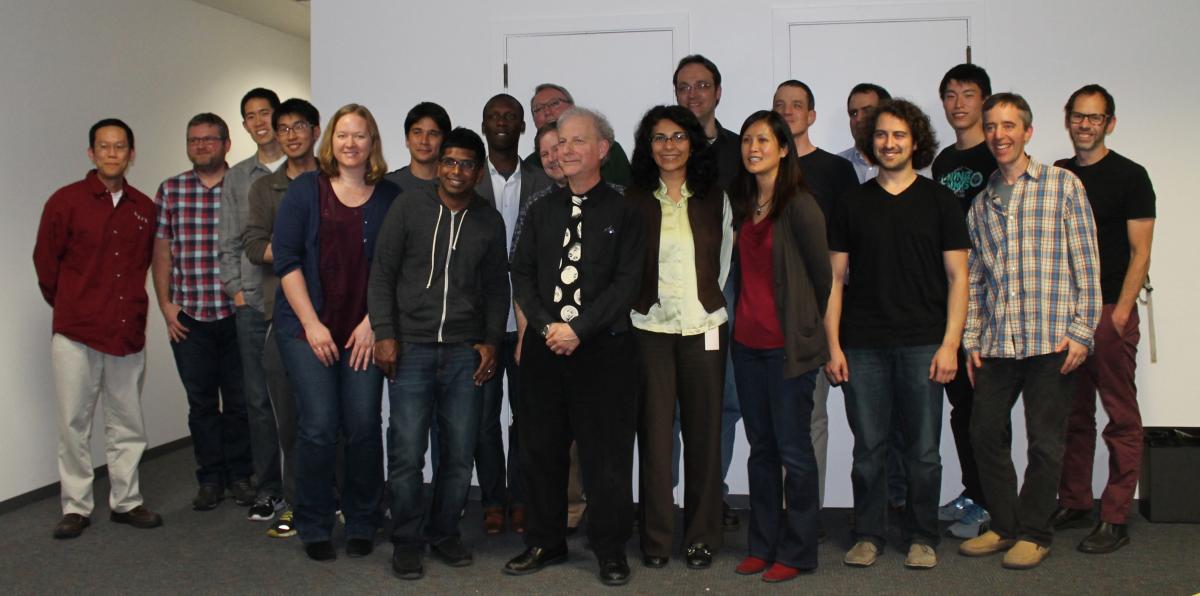Morganfest

On March 13 and 14, 2015, ICSI researchers, alumni, and friends gathered to celebrate the career of Nelson Morgan, the founding leader of ICSI’s Speech Group and the director of ICSI for 12 years.
Ten of his former students and current colleagues gave talks inspired by Morgan’s contributions both to science and to ICSI.
Skip to:
The Spread of Innovation in Speech and Language Processing
Professor Dan Jurafsky
Chair of Linguistics,
Professor of Computer Science, Stanford
|
Abstract: |
|
The End of General-Purpose Computers (Again)
Krste Asanović
Professor of Computer Science
UC Berkeley
|
Abstract: |
|
*NN: Neural Network Acoustic Modelling Across the Decades
Professor Steve Renals
Professor of Speech Technology
University of Ediburgh
|
Abstract: |
|
Why Big Dumb Neural Nets Are Even Smarter Than We Thought
Brian Kingsbury
Thomas J. Watson Research Center
|
Abstract: |
|
Speech Recognition: HMM (1975-today), HMM/ANN (1985-today), HMM/DNN (2005-today), HMM/CS (2010-today), and others (2010-today). But Are we Really Making Progress?
Professor Hervé Bourlard
Director, Idiap Research Institute
Professor, EPFL
|
Abstract: After a very brief discussion along this perspective, we will try to identify where new understanding actually occurred and what/why "new" ideas can have a lasting impact on the field. From experience, it is clear that real progress can only be achieved through understanding of the full system, and "ignorance-based systems" will always quickly reach serious limitations. The tradeoff is probably somewhere in between. But, in all cases, our community should make sure to remain at the forefront of new theoretical developments. This talk will assume basic knowledge of all the fields and acronyms (and a few more) listed in the title. |
|
Deep vs. Wide: Questions for Continuous-Space Language Processing
Professor Mari Ostendorf
Professor of Electrical Engineering
University of Washington
|
Abstract: |
|
Robustness, Separation, and Pitch
Professor Dan Ellis
Professor of Electrical Engineering
Columbia University
|
Abstract: I'll review some approaches to robust speech recognition with special attention to those that attempt to separate the speech energy, and talk about the role of pitch and how useful it can be in aiding recognition. |
|
Dealing with Irrelevant Variability in Speech
Professor Hynek Hermansky
The Johns Hopkins University
|
Abstract: Taking the guidance from nature, some organisms (such as some insects) indeed do with simple sensor followed by a one-stage perceptual system. However, any more advanced organism (including humans) posses much more structured perceptual systems, designed by forces of nature to deal with effects of unwanted noises. Along these lines, we argue for the continuing need for build-in structures in feature extraction and classifiers, based on our advancing knowledge of properties of cognitive signals such as speech. |
|
Can we Understand the HMM's Failures to Model Speech Well Enough to Replace It?
Steven Wegmann
Director of Speech Research
ICSI
|
Abstract: |
|
Morgan - A History of Collaboration in Speech Research
Horacio Franco, Elizabeth Shriberg
SRI International
Andreas Stolcke
Microsoft Research
|
Abstract: |
|
